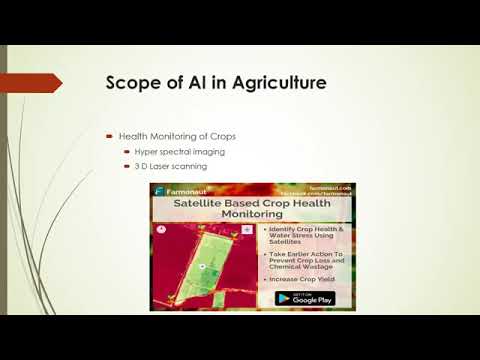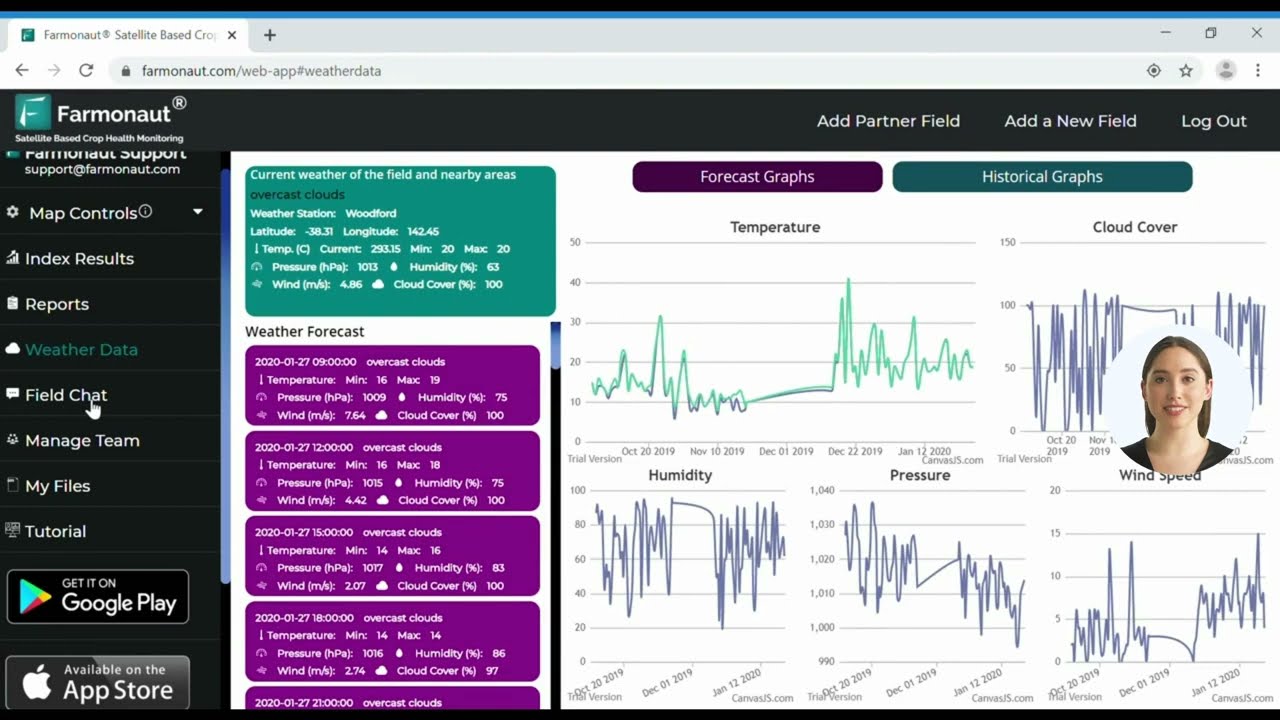Pennsylvania’s Great Awakening: The 17-Year Cicada Emergence and Its Impact on Local Ecosystems

“Brood 14 cicadas emerge after 17 years when soil temperatures reach 64°F, featuring all three 17-year cicada species.”
As spring approaches, we at Farmonaut are excited to witness one of nature’s most fascinating spectacles: the 17-year cicada emergence in Pennsylvania. This remarkable event, featuring Brood 14 cicadas, is set to captivate residents and scientists alike. In this comprehensive guide, we’ll explore the intricacies of this natural phenomenon, its impact on local ecosystems, and how modern agricultural technology can help us better understand and adapt to such ecological events.
The Great Awakening: Understanding the 17-Year Cicada Emergence
The 17-year cicada emergence in Pennsylvania is a truly extraordinary event that occurs only once every 17 years. As entomologists and nature enthusiasts eagerly anticipate this spectacle, let’s delve into the details of what makes this emergence so special.
- Brood 14 Cicadas: This particular emergence features Brood 14, one of the largest broods of 17-year cicadas.
- Species Diversity: All three species of 17-year cicadas will be present during this emergence, making it an even more remarkable occurrence.
- Emergence Trigger: The cicadas will begin to emerge when soil temperatures reach approximately 64 degrees Fahrenheit.
- Geographical Spread: The emergence will be particularly noticeable in Adams and Berks Counties, as well as in surrounding areas across Pennsylvania and twelve other states.
As we prepare for this natural phenomenon, it’s crucial to understand its significance and impact on our local ecosystems. At Farmonaut, we recognize the importance of such events in the broader context of agricultural and environmental management.
The Cicada Life Cycle: A 17-Year Journey
To truly appreciate the magnitude of this event, we must first understand the fascinating life cycle of these remarkable insects. The 17-year cicadas have one of the longest lifespans of any insect, spending the vast majority of their lives underground before emerging for a brief but spectacular finale.
- Egg Stage: The cycle begins when female cicadas lay their eggs in tree branches.
- Nymph Stage: After hatching, the nymphs fall to the ground and burrow into the soil.
- Underground Development: The nymphs spend 17 years feeding on tree root sap and slowly developing.
- Emergence: When soil conditions are right, the mature nymphs emerge from the ground.
- Adult Stage: The emerged cicadas shed their exoskeletons, develop wings, and begin their mating rituals.
- Reproduction and Death: After mating and laying eggs, the adult cicadas die, completing the 17-year cycle.
This extraordinary life cycle is a testament to the resilience and adaptability of these insects. As we at Farmonaut work to develop innovative solutions for agriculture, we draw inspiration from such natural wonders to create sustainable and efficient farming practices.
When Do Cicadas Emerge: Timing and Triggers
The cicada spring emergence is a carefully timed event, triggered by specific environmental conditions. Understanding these triggers is crucial for predicting and preparing for the emergence.
- Soil Temperature: The primary trigger for emergence is when soil temperatures reach approximately 64 degrees Fahrenheit (18 degrees Celsius).
- Seasonal Timing: In Pennsylvania, this typically occurs between May and June.
- Weather Patterns: Warm, humid conditions following spring rains often coincide with cicada emergences.
- Time of Day: Cicadas often emerge in the evening or at night to avoid predators.
At Farmonaut, we use advanced satellite technology and AI-driven systems to monitor environmental conditions that affect agriculture. This same technology can be applied to predict and track cicada emergences, providing valuable data for researchers and farmers alike.
Explore Farmonaut’s API for environmental monitoring
Geographical Distribution: Cicadas in Adams and Berks Counties
While the 17-year cicada emergence will be noticeable across much of Pennsylvania, certain areas will experience a more pronounced presence. Adams and Berks Counties are expected to be hotspots for cicada activity during this emergence.
- Adams County: Known for its rich agricultural heritage, Adams County may see significant cicada populations in its orchards and woodlands.
- Berks County: With its diverse landscape of forests and farmland, Berks County is likely to experience widespread cicada activity.
- Surrounding Areas: Counties adjacent to Adams and Berks may also see substantial cicada populations, creating a region-wide phenomenon.
Understanding the geographical distribution of cicadas is crucial for farmers and residents in these areas. At Farmonaut, we provide detailed satellite imagery and analysis that can help track and predict the spread of such natural events across different regions.
Ecological Impact: Cicadas and the Environment
The cicada ecosystem impact is significant and multifaceted. These insects play a crucial role in their environment, affecting various aspects of the ecosystem during their brief above-ground existence.
- Soil Aeration: As cicadas emerge, they create numerous exit holes in the soil, improving aeration and water penetration.
- Nutrient Cycling: The mass die-off of cicadas after mating provides a substantial nutrient boost to the soil.
- Food Source: Cicadas serve as a vital food source for a wide range of predators, including birds, mammals, and other insects.
- Tree Pruning: While cicadas can cause minor damage to young trees, their egg-laying behavior often results in natural pruning that can benefit tree health in the long run.
At Farmonaut, we recognize the importance of understanding these ecological interactions. Our satellite-based crop health monitoring systems can help farmers and researchers track the impact of cicada emergences on local vegetation and soil health.

Cicadas as Bird Food: A Feast for Feathered Friends
One of the most significant ecological impacts of the cicada emergence is the abundance of food it provides for various bird species. This periodic feast can have far-reaching effects on bird populations and behavior.
- Population Boost: The abundance of cicadas can lead to increased survival rates and breeding success for many bird species.
- Dietary Shift: During cicada emergences, many birds will shift their diets to take advantage of this plentiful food source.
- Behavioral Changes: Birds may alter their foraging patterns and territories to access cicada-rich areas.
- Long-term Effects: The nutritional boost from cicadas can have positive effects on bird populations that last beyond the emergence period.
Understanding these ecological relationships is crucial for wildlife management and conservation efforts. At Farmonaut, we believe that comprehensive environmental monitoring, including tracking such natural events, is essential for sustainable agriculture and ecosystem management.
Are Cicadas Harmful? Addressing Common Concerns
As the cicada emergence approaches, many Pennsylvania residents may have concerns about potential harm or damage these insects might cause. Let’s address some common questions and misconceptions:
- Human Safety: Cicadas are harmless to humans. They don’t bite or sting and are not known to carry diseases.
- Pet Safety: While cicadas are not toxic to pets, excessive consumption may cause digestive upset in dogs or cats.
- Plant Damage: Adult cicadas can cause minor damage to young or small trees during egg-laying, but this is generally not severe for mature trees.
- Noise Levels: The mating call of male cicadas can be loud but is not harmful to human hearing.
Overall, cicadas pose no significant threat to human health or property. Their emergence is a natural process that has been occurring for millions of years, and the benefits they provide to the ecosystem far outweigh any minor inconveniences.
The Cicada Mating Cycle: Nature’s Grand Performance
The primary purpose of the cicada emergence is reproduction. This brief but intense mating cycle is a fascinating display of natural behavior and evolutionary adaptation.
- Emergence: Nymphs emerge from the ground and climb nearby vegetation.
- Molting: They shed their exoskeletons and develop into winged adults.
- Chorus: Male cicadas produce their characteristic mating call using tymbals on their abdomens.
- Female Response: Females respond to the males’ calls with wing flicks, initiating courtship.
- Mating: Successful pairs mate, with the process lasting several hours.
- Egg Laying: Females use their ovipositors to lay eggs in small tree branches.
- Life Cycle Completion: Adults die shortly after mating and egg-laying, completing the 17-year cycle.
This intricate mating process ensures the continuation of the species and sets the stage for the next generation of cicadas that will emerge 17 years later. At Farmonaut, we appreciate the complexity of natural cycles and strive to develop agricultural solutions that work in harmony with these ecological processes.
“Pennsylvania’s 17-year cicada emergence, occurring between May and June, affects multiple counties including Adams and Berks.”
Cicada Emergence Temperature: The Perfect Conditions
The timing of the cicada emergence is closely tied to soil temperature. Understanding these temperature requirements is crucial for predicting and preparing for the emergence.
- Trigger Temperature: Cicadas typically emerge when soil temperatures at a depth of 8 inches reach 64°F (18°C).
- Consistency: This temperature needs to be consistent for several days to trigger a mass emergence.
- Regional Variations: Slight variations in emergence timing may occur due to local climate and soil conditions.
- Climate Change Impact: Long-term climate trends may affect future emergence patterns and timing.
At Farmonaut, we use advanced satellite technology to monitor soil temperatures and other environmental factors. This data not only helps predict cicada emergences but also provides valuable insights for agricultural planning and management.
Check out Farmonaut’s API Developer Docs for weather data
Pennsylvania’s 17-Year Cicada Emergence Timeline and Impact
| Date Range | Cicada Life Stage | Estimated Population Density | Ecological Impact | Counties Affected |
|---|---|---|---|---|
| Early May | Nymph Emergence | Low | Soil Aeration | Adams, Berks (initial) |
| Mid-May | Adult Emergence | Moderate | Bird Feeding Activity Increases | Adams, Berks, surrounding counties |
| Late May | Mating Period | High | Peak Predator Activity | Widespread across PA |
| Early June | Egg Laying | Peak | Minor Tree Branch Damage | All affected counties |
| Mid-June | Adult Die-off | Declining | Nutrient Cycling in Soil | All affected counties |
Preparing for the Cicada Emergence: Tips for Residents and Farmers
As we approach the cicada emergence period, it’s important for Pennsylvania residents and farmers to be prepared. Here are some practical tips to help you navigate this extraordinary event:
- Protect Young Trees: Cover small or newly planted trees with fine netting to prevent damage from egg-laying cicadas.
- Adjust Outdoor Activities: Be prepared for increased noise levels during peak emergence times, especially in the evenings.
- Educate Children: Use this as an opportunity to teach children about natural cycles and insect biology.
- Clean Up: After the emergence, rake up dead cicadas to prevent odor and attract wildlife to your yard.
- Avoid Pesticides: Cicadas are harmless and play a crucial role in the ecosystem, so pesticide use is unnecessary and potentially harmful.
At Farmonaut, we believe in working with nature rather than against it. Our satellite-based crop monitoring systems can help farmers adapt their practices to natural events like cicada emergences, ensuring sustainable and efficient agricultural management.
The Role of Technology in Monitoring Cicada Emergences
Modern technology plays a crucial role in tracking and understanding cicada emergences. At Farmonaut, we leverage cutting-edge satellite technology and AI-driven systems to monitor environmental conditions that affect both agriculture and natural phenomena like cicada emergences.
- Satellite Imagery: High-resolution satellite images can track changes in vegetation that may indicate cicada activity.
- Soil Temperature Monitoring: Our advanced sensors can accurately measure soil temperatures, helping predict emergence timing.
- AI-Powered Analysis: Machine learning algorithms can process vast amounts of data to identify patterns and make predictions about cicada populations and behavior.
- Mobile Apps: Citizen science apps allow residents to report cicada sightings, contributing to a broader understanding of the emergence.
By harnessing these technological advancements, we can gain deeper insights into natural cycles and their impact on our ecosystems and agricultural systems.
Frequently Asked Questions about the 17-Year Cicada Emergence
Q: Are cicadas dangerous to humans or pets?
A: No, cicadas are not dangerous. They don’t bite or sting humans or pets. However, pets should be prevented from eating large quantities of cicadas to avoid digestive upset.
Q: Will cicadas damage my garden or crops?
A: Cicadas generally do not cause significant damage to mature plants or crops. They may cause minor damage to young or small trees during egg-laying, but this is usually not severe.
Q: How long will the cicada emergence last?
A: The emergence typically lasts for about 4-6 weeks, with peak activity occurring for about 2-3 weeks within that period.
Q: Can I eat cicadas?
A: While cicadas are edible and considered a delicacy in some cultures, it’s important to properly prepare them and be aware of any personal allergies or sensitivities.
Q: How can I contribute to cicada research?
A: Many citizen science projects allow you to report cicada sightings. Check with local universities or nature centers for opportunities to participate in cicada monitoring programs.
Conclusion: Embracing Nature’s Rhythms
The 17-year cicada emergence in Pennsylvania is a remarkable testament to the intricate rhythms of nature. As we at Farmonaut work to develop innovative solutions for sustainable agriculture, we draw inspiration from such natural phenomena. Understanding and respecting these ecological cycles is crucial for creating farming practices that work in harmony with our environment.
As Pennsylvania prepares for this extraordinary event, we encourage residents to embrace the wonder of the cicada emergence. It’s a unique opportunity to witness a fascinating aspect of our natural world and to reflect on the complex interconnections within our ecosystems.
By leveraging advanced technology and data-driven insights, we can continue to deepen our understanding of these natural processes and their impact on agriculture and local ecosystems. At Farmonaut, we remain committed to bridging the gap between cutting-edge technology and traditional farming practices, ensuring a sustainable and prosperous future for agriculture.
Earn With Farmonaut: Join our Affiliate Program
Earn 20% recurring commission with Farmonaut’s affiliate program by sharing your promo code and helping farmers save 10%. Onboard 10 Elite farmers monthly to earn a minimum of $148,000 annually—start now and grow your income!
Farmonaut Subscriptions
As we marvel at the wonders of nature, like the 17-year cicada emergence, let’s also embrace the technological advancements that allow us to better understand and work with these natural cycles. Together, we can create a more sustainable and harmonious relationship between agriculture and our environment.




















